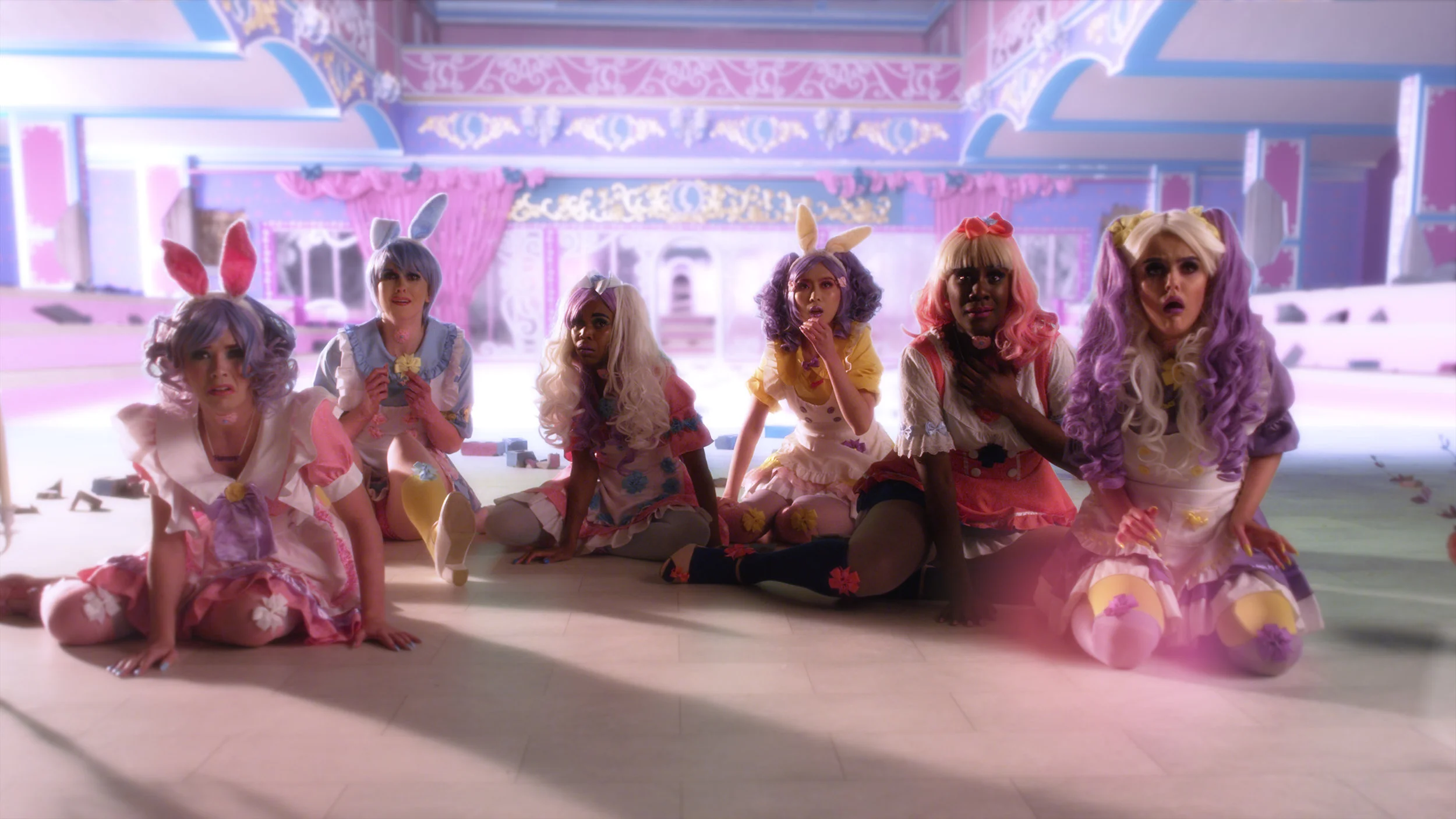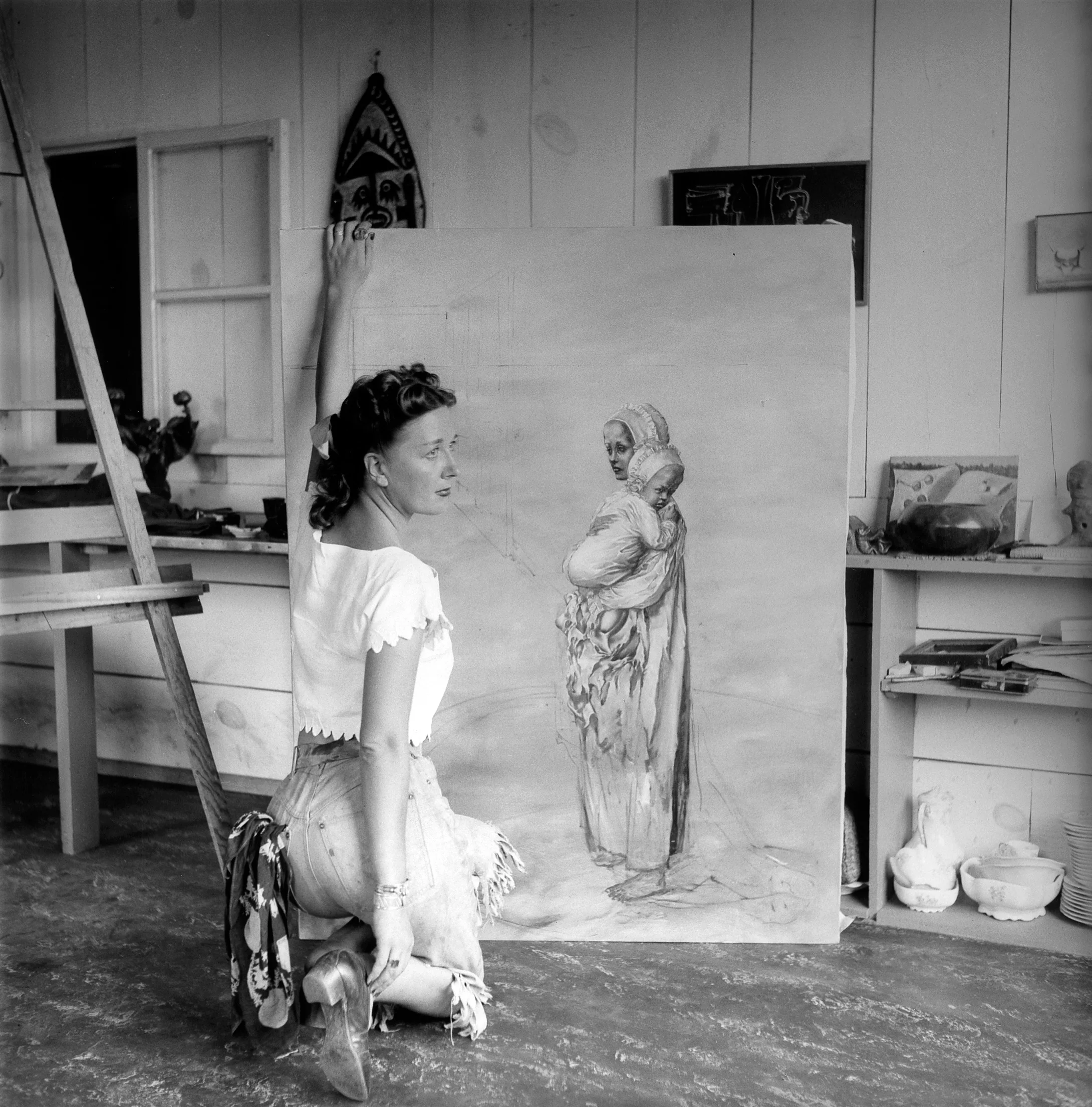The woman in the crowd
Silver Lake Drive is a comprehensive exhibition of the mysterious and fascinating work of Alex Prager (b. 1979). Over the two floors of the Photographers Gallery dedicated to the artist it is possible to see 40 of her large-scale technicolor photographs alongside her complete film work.
Entering the exhibition is like driving down a highway in Los Angeles, where the artist is from. The sunshine and the uneasiness meet on the glossy over-saturated pictures. It’s an ode to the Golden Age of Hollywood, where an enigmatic film noir aesthetics and a post modern gaze at the society and the alienation of the single merge in a circus of colourful and cryptic scenes.
In her work, the cinema and film industry influence is radical. Prager never studied photography. Becoming a photographer was an over-night decision after having visited a William Eggleston exhibition at the J. Paul Getty Museum in Los Angeles. She started to take street photos, but soon enough she dedicated herself to stage photography. Her pictures (and films) are shot in L.A. studios. The composition, lights and costumes are hyperreal and they echo a golden age: a retro and timeless cinematic period.
Her bond with Los Angeles and Hollywood is also evident in her collaboration with major stars of the industry, like Elizabeth Banks, Gary Oldman and Bryce Dallas Howard.
Especially interesting is her use of films and videos in her work. She says that the reason she likes videos is that they are a “before, now and after” of her pictures. A way for her to develop and extend the meaning of the work. The films are technically flawless and her point of view and aesthetic is bold and direct. Reminiscences of classic films pervade her work: from Hitchcock to Lynch.
What really stroke me are the protagonists of the intricate story Prager is telling us. They are women, they are girls lost in the crowd. They are covered in thick layers of make up and they are wearing wigs. The colourfulness of their clothes and the happiness of the scenario screeches with their worried, terrified and absent looks. It’s stage fright. It is the sensation to be alone surrounded by thousand strangers. It is feeling alone even though everyone is staring at you.
In this perspective, Prager’s work presents a new and interesting point of view on representing (and being) women in the Western World. The girls in her pictures and films are the same as in Hitchcock’s work. But they are finally looking back at the viewer. They are no longer just the objects of a male gaze. Now they are looking back.
It’s a double glaze mirror that Prager builds between image and reality, between representation and fake truth. The point of view of the pictures is often high, like a CCTV camera, from where the spectator can see the whole crowd. The viewer is in a controlling position over the alienation of the society. The female characters staring down the barrel are now demanding the spectator to empathise and finally feeling responsible for his act of looking down at them.
Alex Prager’s body of work is a complex and concocted game, in which the deeper truth can just be glimpsed among artificial constructions. And I suggest you go to the Photographer Gallery to look for it.
Cover Photo Alex Prager’s Silver Lake Drive





